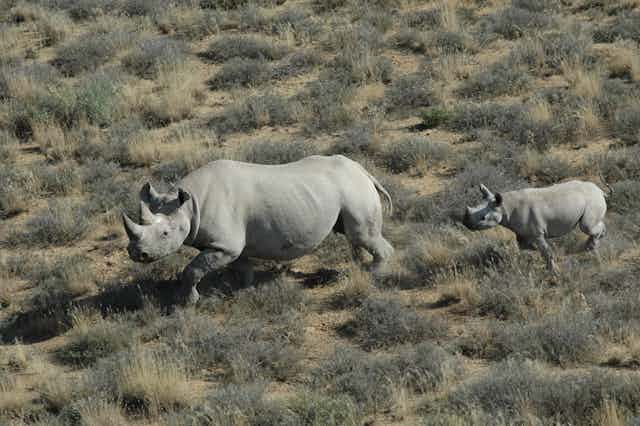Should your next holiday include a safari, whale watching, or a trip to a tiger temple? Ecotourism has recently been in the spotlight. For instance, we’ve seen claims that tourism helps conserve tigers and that it has been linked to wildlife trafficking.
But how can we tell if ecotourism is good or bad for threatened species? In our research published today in PLOS ONE we looked at nine different species, and found that overall, ecotourism is good for wildlife. Great green macaw in Costa Rica, Egyptian vultures in Spain, hoolock gibbons in India, African penguins, African wild dogs, cheetahs, and golden lion tamarins in Brazil all benefited from tourism.
But we also found that current tourism levels aren’t enough to help orang utans in Sumatra, and are actually bad for sea lions in New Zealand. So how do we get the balance right?

What is ecotourism?
“Ecotourism” is a very broad term. It may include visitors to public national parks, volunteers for community projects, or adventurous expeditions to remote regions. Some may even include hunting safaris.
Ecotourism has both positive and negative effects. It can contribute to conservation, or impact wildlife, or both. Some effects are small, others large; some direct, others indirect.
Attitudes of local communities towards native wildlife, for example, influence whether they support or oppose poaching. Furthermore, income from ecotourism may be used for conservation and local community development projects, but not always.
We also need some way to measure ecotourism effects on wildlife? Many ecotourism measures are social or economic rather than ecological. It’s often difficult to compare positive and negative impacts on a species. Therefore, quantifying the net effect of ecotourism is challenging.
For species at risk of extinction, such as those in the International Union for the Conservation of Nature Red List, it is critical to be able to assess how various threats, including tourism, affect their survival. So we wanted to develop a way of measuring how ecotourism affects the risk of extinction for these species.
Measuring ecotourism
Previously when considering ecotourism researchers looked at revenue to parks, and how much of a species’ global population was protected by these parks.
This approach showed that tourism funding is significant for many IUCN Redlisted mammals, birds and amphibians. But it doesn’t tell us whether ecotourism will help or harm a specific species or population.
Our new approach uses population analysis (specifically population viability analysis). This sort of analysis is the gold standard for predicting future population trends, and probable time to extinction, for threatened species.
We looked at how populations changed over time in response to threatening processes, by simulating births and deaths one generation at a time. We do this thousands of times to estimate extinction risk. These methods are well-tested and widely-used in practical wildlife management.

To do this we need to know a couple of things about the species we are looking at: habitat area; population size and age. We also need to know the birth and death rates for different ages as well as migration patterns. This information exists only for some threatened species such as those used in our study.
We also need to be able to convert ecotourism effects into these measures of species performance. By looking at how ecotourism affects these aspects we can compare ecotourism to other threats such as poaching, logging, or fishing.

Winners and losers
For seven of the species that we looked at, ecotourism provides net conservation gains. This is achieved through establishing private conservation reserves, restoring habitat or by reducing habitat damage. Removing feral predators, increasing anti-poaching patrols, captive breeding and supplementary feeding also helps.
But for orang utans in Sumatra, small-scale ecotourism cannot overcome the negative impacts of logging. However, larger-scale ecotourism yields a net positive outcome by enabling habitat protection and reintroduction of individuals from captive situations.
Unfortunately for New Zealand’s sea lions, ecotourism only compounds the impacts of intensive fisheries, because it increases the number of sea lion pups dying as a result of direct disturbance at haul out sites.
Our research highlights three key messages. The first is that to predict how ecotourism affects wildlife, we need to know basic things about them: ecotourism needs biologists as well as social scientists.
The second is that the effects of ecotourism are not universal: whether ecotourism is good or bad depends on the species and local circumstances.
The third, and perhaps most important, is that ecotourism, at appropriate levels, can indeed help to save threatened species from extinction.


